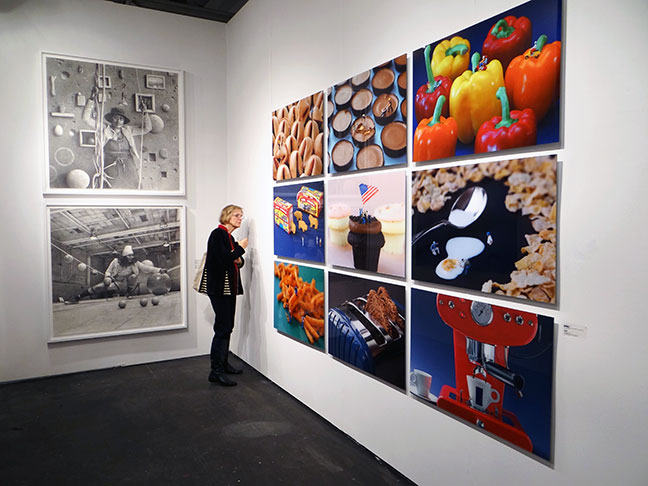Artist Statement Quick Guide
How to Write Yours Right
No matter how people find out about you or your art, anyone who's interested in knowing more will start looking for information, usually online and usually on search engines. This is where your artist statement or "about my art" section on your website or social media pages comes in. Whether or not you like the idea of putting your art into words, it's something you have to confront sooner or later. Why? Because you're the only one who knows the full story. With that in mind, here's a quick easy guide a to writing an artist statement that people can understand, identify with, and appreciate...
Keep it short. A good artist statement introduces your art fast, so that readers can instantly look at, connect with, and enjoy your work in more meaningful ways than they could when they first laid eyes on it. 150 to 250 words (about half a typed page) is more than enough content to get the main points across in the large majority statements.
Keep it simple. All people need is a basic introduction and understanding of your art. You probably already know what questions people tend to ask you the most and what answers work best. Include that information and you'll be off to a great start.
Write for total strangers. If you are like most artists, you want to expand your fan base. People who already know and understand your art don't need help, or if they do, they know how to get it. People who are new to your art do need help. They are the ones you want to write for and reach out to.
Make sure anyone can understand your statement. Write in ordinary everyday language and avoid art words or jargon that only readers with art educations are familiar with. You never know who has the potential to become a fan, a follower, an advocate, and especially a buyer. An easy-to-understand artist statement increases the chances of those things happening.
Welcome people to your art. Show readers you care about connecting with them and want to make sure they have a basic sense or feel for your work.
Make it conversational. Write like you're standing next to the reader and talking to them about your art. That means writing in the first person, not the third person. Use "I", "me" and "my" when referring to yourself, and not "he", "she" or "they".
Answer the question, "What's in it for me, the reader?" People who see that there's something about your art they can identify with will spend more time looking and learning about it than people who don't.
Stay positive. People think about your statement while looking at your art. You want their experiences to be positive. For example, rather than say something like "My art is about suffering and oppression," say "My art is about putting an end to suffering and oppression."
Separate your art out from all other art. Talk about its intangible value or significance. What makes it special? What makes it unique? What does it have that similar looking art doesn't?
Talk about the "more" of your art. In addition to looking the way it does, what does it stand for or represent or symbolize or mean?
Make your statement only about you. It should be 100% about your art and no one else's. Mentioning other artists' names in any way takes attention away from you and focuses it on them.
Give readers complete freedom to experience, enjoy, interpret and engage with your art. Talk about what your work means to you rather than tell people what it should mean to them, how they should look at it, what they should think about it, etc.
Don't critique your art. Save that for the critics and reviewers. The purpose of a good statement is to introduce or explain your art, not to subjectively judge or evaluate it. Stick to the facts.
If you can't write or have trouble expressing your art in words, have an art writer write your statement for you. Many artists have difficulty putting the basic information, significance, or meaning of their art into words. If you're one of those, think seriously about hiring a professional writer to help.
**** Read more about how to write a quality artist statement here: Your Artist Statement: Explaining the Unexplainable
****
Having trouble writing your artist statement? I can help. I write statements for artists all the time. If you want a compelling statement that makes readers want to know more about your art, email me -- Alan Bamberger-- or call 415.931.7875. Tell me what you need and we'll get it done together.
****

(L-R, art by Ethan Murrow & Christopher Boffoli)

Current Features
- How to Buy Art on Instagram and Facebook
More and more people are buying more and more art online all the time, not only from artist websites or online stores, but perhaps even more so, on social media ... - Collect Art Like a Pro
In order to collect art intelligently, you have to master two basic skills. The first is being able to... - San Francisco Art Galleries >>


